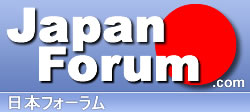
 |
Question about 漢字 readings.
Hey guys, today I picked up a book in Barnes and Noble called, "250 Essential Japanese Kanji Characters: Volume 1" and I am enjoying it a lot so far, however there is a question I have for you guys.
When it is talking about the reading of the numbers, it has things like this: futa-tsu, ni ふた•つ、ニ two My question is what does the ____•つ part mean? It has it in the readings for every number except 十 and 百. Thanks! EDIT: Picture of what I mean.  |
When 二 is by itself, it's pronounced "ni". In this example 二時 (niji-2 o'clock) the pronunciation is "ni". The second reading is pronounced "futa". When 二 is paired with the hiragana つ, it's pronounced "futatsu" 二つ. "Futatsu" is a counter for items.
I hope that helped. |
So, is it only attached to nouns that have counters? Or is the つ itself a counter? That is what is confusing me.
The book gives the example of two people, and it is 二人 (ふたり) and then the second (date); (for) two days, which is 二日 (ふつか) I think it is called okurigana, the concept itself doesn't confuse me, but I don't understand why it is attached to these kanji. |
二 by itself is the number 2. Adding つ makes it a generalized counter. The つ indicates what kind of item is being counted. There are other counters as well; the counter ひき is used when counting animals. まい is used for flat objects. There are a variety of other counters too.
As for why it's attached to those kanji-二 indicates how many, and the 2nd kanji indicates how many of a particular object. Example- 二人. The 2nd kanji indicates people, while the 1st kanji indicates how many people. |
Ah, I think I understand now. ^_^
|
Ah, that's good. I'm glad my explanation wasn't too confusing.
|
Quote:
First, let me surprise you by telling how I learned to count from 1 to 10. This was when I was 2 or 3. Ready? ひとつ、ふたつ、みっつ、よっつ、いつつ、むっつ、な なつ、やっつ、ここのつ、and とお. Did this shock you? Hope it did. That is how the Japanese counted before we encountered the Chinese. We still often use this system to count to 10. Now when I entered kindergarten at age 4, I learned another system. This one won't surprise you. いち、に、さん、し、ご、ろく、しち、はち、く、and じゅう. Boring because it sounds familiar, isn't it? So, つ is the almighty counter but it can only be used with numbers 1 thru 9. That is why we need other counters and others are difficult to learn because none of them are as almighty as the つ. That we already had ひとつ、ふたつ、みっつ, etc. before encountering the Chinese means that these are original Japanese words. Therefore, a kanji compound like 二人 is merely a substitute. Even now many better writers write ふたり in kana. If I were a Japanese teacher, I would not teach you to write it in kanji, either. No one even knows what part of the word ふたり is the reading of the 二 or the 人. |
Nagoyankee, thank you for that marvelous explanation, and especially that interesting tidbit about how you learned to count. It is very helpful in allowing me to understand the concept better!
|
Quote:
|
Quote:
The Japanese numbering system still in use today goes up to 10 (とお). 10 does not have a counter. Beyond that, it falls apart badly. 20 - 90 uses ち・ぢ instead of つ. E.g. 10 とお、20 はたち、30 みそぢ、40 よそ ぢ、50 いそぢ、60 むそぢ、70 ななそぢ、8 0 やそぢ、90 ここのそぢ 100, 1000, 10000 all do not have a counter. 100 もも 1000 ち 10000 よろづ Also, after each unit of number, you have to put あまり or まり to segregate the numbers. E.g. 35 - みそまりいつつ, 2009 - ふたちまりここのつ, 421 - よほまりはたちまりひとつ 99,999 ここのよろづまりここのちまりここのほまりここのそぢ まりここのつ is as big as Japanese numbers can go before they hopped on the Chinese bandwagon. It's not hard to see why they needed a new numbering system. |
| All times are GMT. The time now is 11:05 PM. |